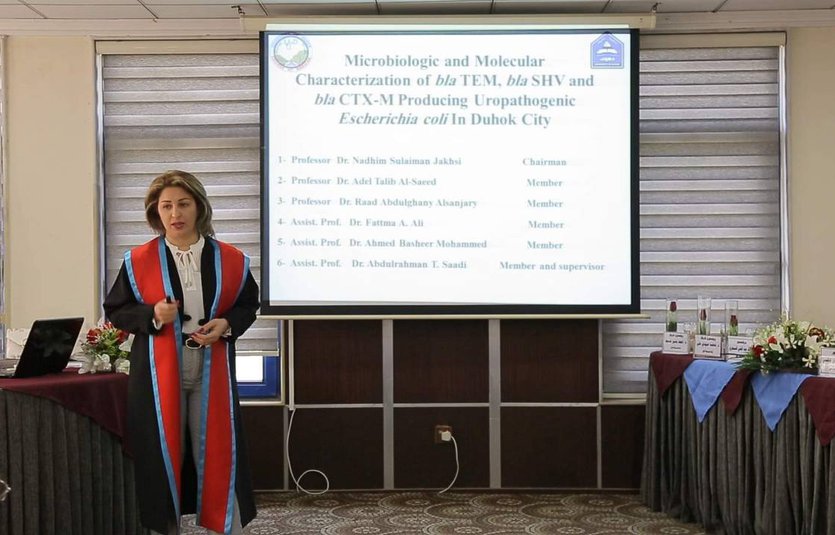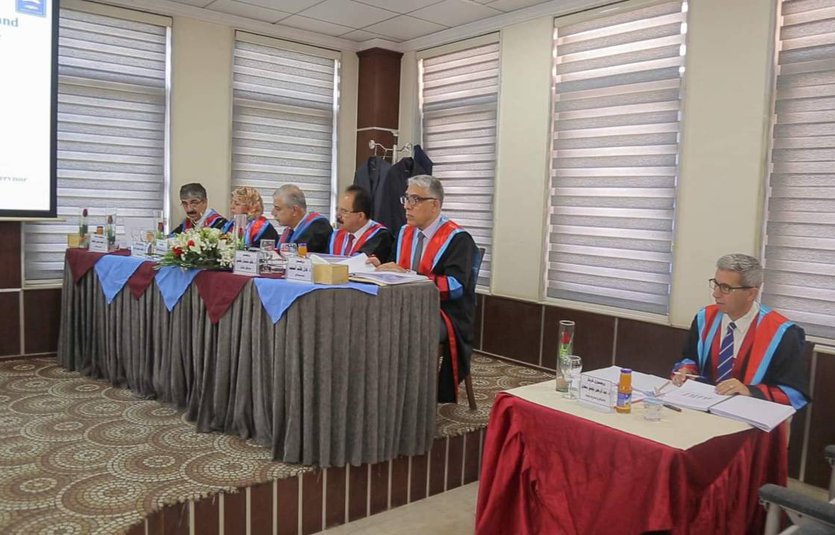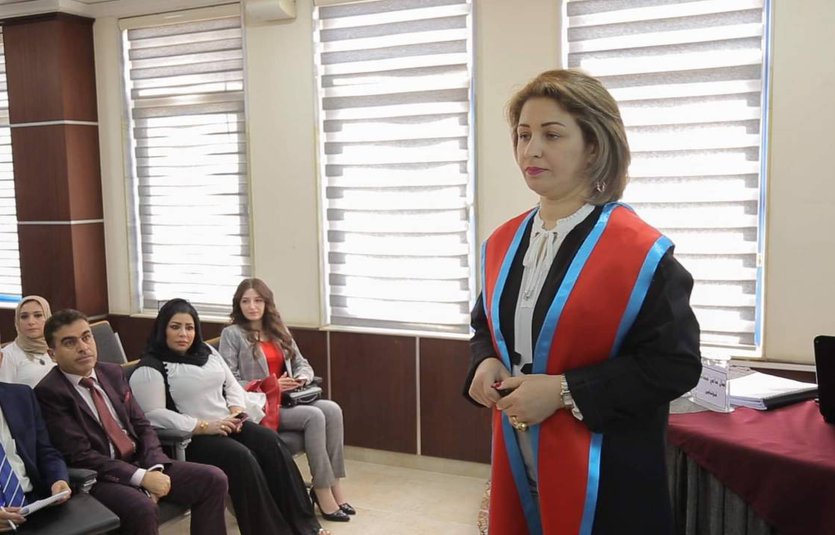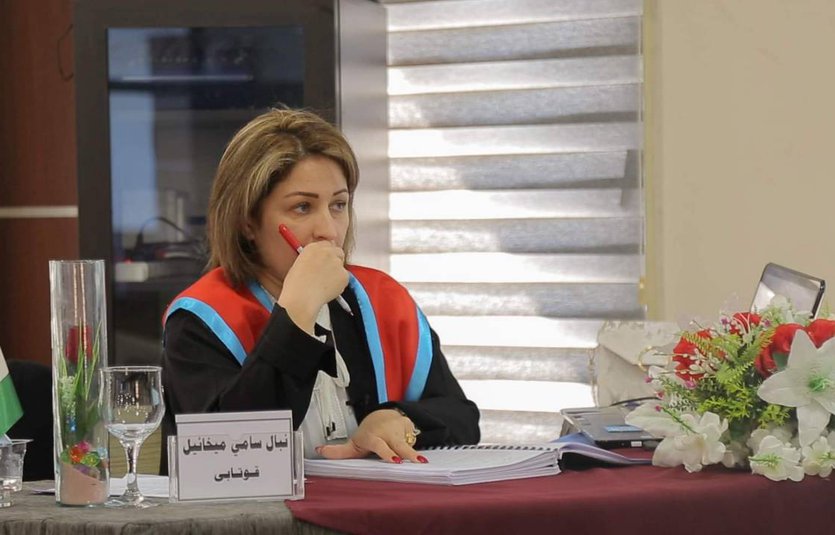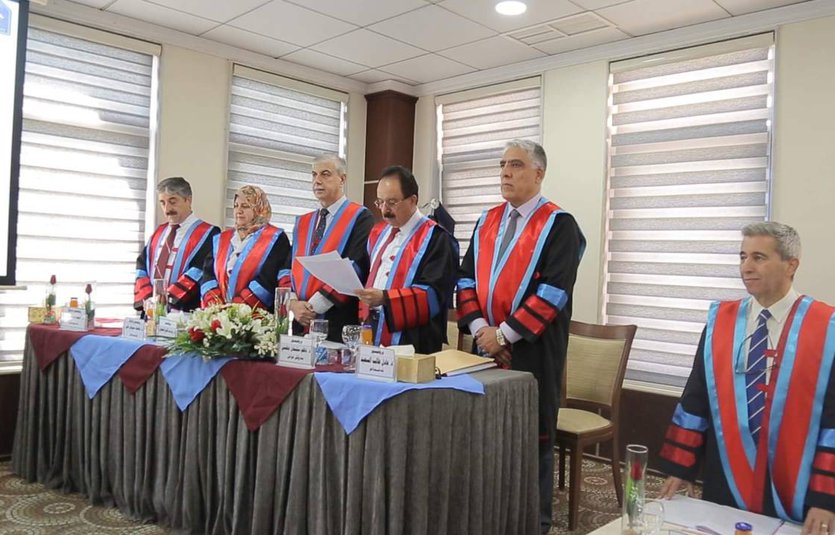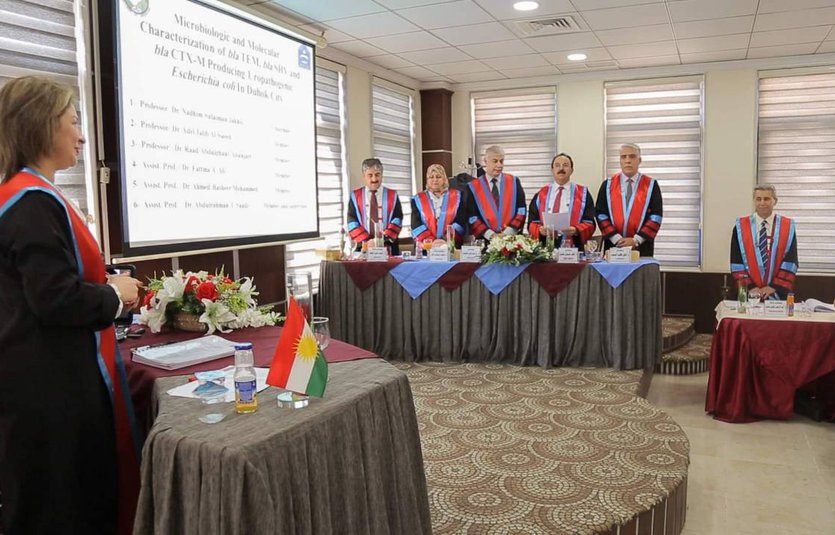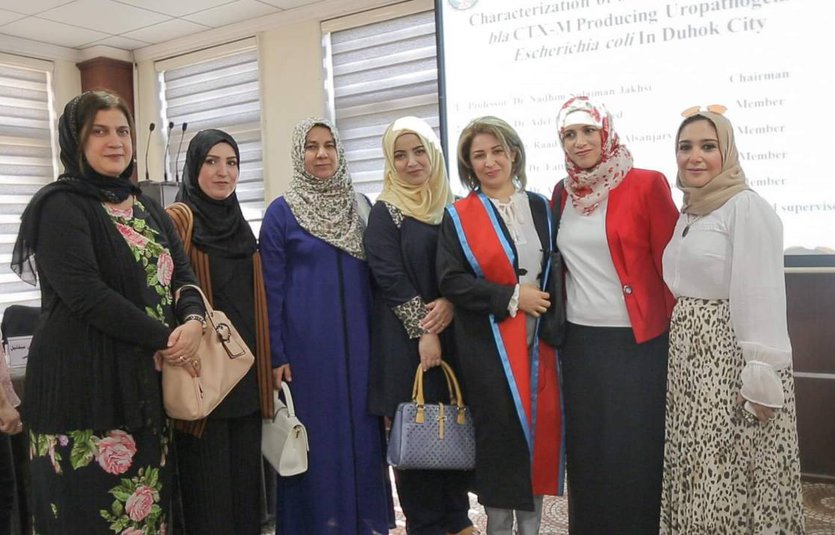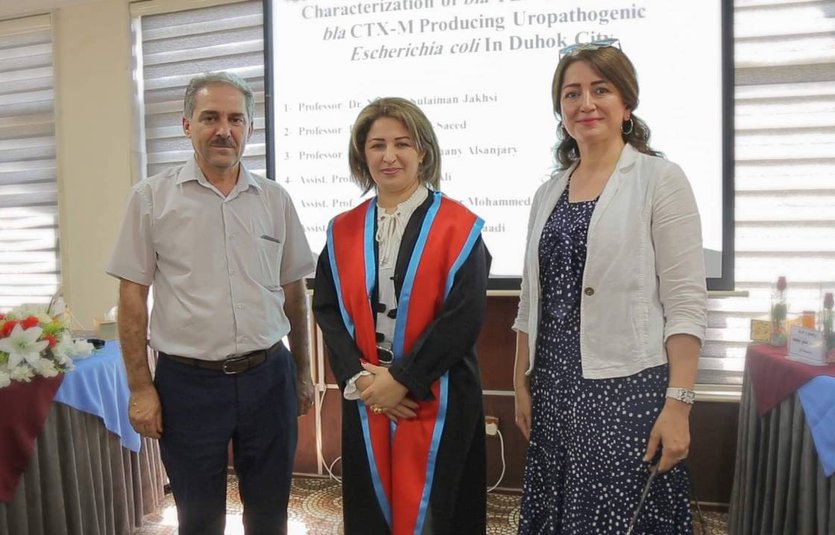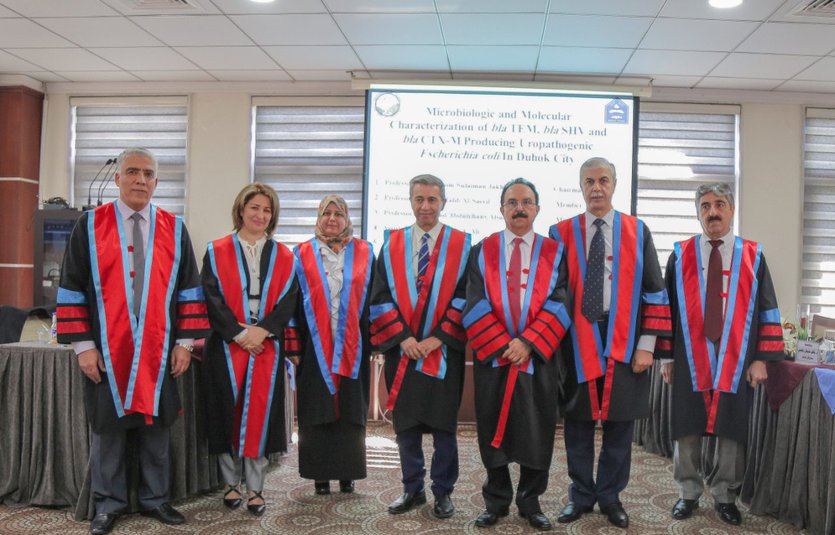The PhD thesis of the student “Dr. Nebal Sami Mechael” under the title of “Microbiologic and Molecular Characterization of bla TEM, bla SHV and bla CTX-M Producing Uropathogenic Escherichia coli In Duhok City” has been discussed on 10.10.2019 at cultural center-UoD. A Thesis Submitted to the council of the College of Medicine, University of Duhok in Partial fulfillment of the requirements for the Degree of Doctorate of Philosophy in Medical Microbiology.

Dr. Nebal Sami Mechael
Affliation: Department of Medicinal Chemistry, College of Pharmacy, University of Duhok, Kurdistan Region, Iraq.
Dr. Nebal Short Biography link: Dr. Nebal
It is worthy to mention that the student published two studies from her thesis as mentioned below:
1. Detection of bla CTX-M, bla TEM-01 and bla SHV Genes in Multidrug Resistant Uropathogenic E. coli Isolated from Patients with Recurrent Urinary Tract Infections (2018); International Journal of Medical Research & Health Sciences; 7(9): 81-89.
Link to the journal: https://www.semanticscholar.org/paper/Detection-of-bla-CTX-M%2C-bla-TEM-01-and-bla-SHV-in-Michael-Saadi/35ab950fd9224afbf00bf9942e91084af3b4267a
2. Extended Spectrum of b- lactamase Status in Escherichia Coli Isolated from Urinary Tract Infections in Duhok City- Iraq (2018); Journal of University of Duhok, Vol. 21, No.2 (Pure and Eng. Sciences), Pp 27-33.
Link to the journal: https://doi.org/10.26682/sjuod.2018.21.2.3
This study was prepared under the supervision of:
- Assistant professor “ Abdulrahman T. Saadi”,
The Scientific Committees were:
- “Dr. Nadhim Sulaiman Jakhsi”: Chairman
- “Dr. Adel Talib Al-Saeed” : Member
- “Dr. Raad Abdulghany Alsanjary” : Member
- Prof. “Dr. Fattma A. Ali” : Member
- Prof. “Dr. Ahmed Basheer Mohammed” : Member
…………………………..
Abstract of the study:
In this study, out of 325 E.coli, 200 ESβLs isolates were detected among adults primary diagnosed as Urinary tract infection who attended Azadi Teaching Hospital, 200 ESβLs isolates were detected from a total of 420 E. coli isolates collected from children primary diagnosed as Urinary tract infection who attended Heve Pediatric Teaching Hospital during the period from June to December 2016 in Duhok city, Kurdistan region. Both adult and pediatric patients were from different ages ranging from (≥15-66) year, (1-14) years respectively and both sexes. All the 400 E. coli isolates producing ESβLs isolates were identified after subjecting traditionally to antibiotics sensitivity test. In addition to the automated Phoenix system, Double Disc Synergy Approximation Test was also used to confirm the positivity of ESβLs. Highly resistant rates were shown for the most tested antibiotics, especially for the 3rd generation cephalosporin (Ceftriaxone, Cefotaxime, Ceftazidime and Aztreonam), which registered 99% for each. Imipenem and Amikacin were found as the most potent antibiotic compared to antibiotics which encountered 97% and 96% respectively.
Among 200 E. coli isolates ESβLs of adult patients 105/200(52.5%) were isolated from males whereas 95/200(47.5%) isolated from females. At the same time, a total of 200 E. coli isolates ESβLs of paediatric patients, 106/200 (53 %) were isolated from females while 94/200(47%) isolated from males.
Among E. coli isolates, ESβLs pattern was a high percentage producing E.coli, among adult patients 175/325 (53.8%) versus paediatric patients 163/420 (38.8%). AmpC was recorded in adults and paediatric patients 21/325(6.46%) and 33/420(7.86%) respectively. Carbapenemase producing isolates recorded the least percentage for both adults and pediatric patients 4/325 (1.23%) and 4/420 (0.95%) respectively.
Regarding previous hospital admission as a risk factor in association with ESβLs, there was a high percentage of ESβLs producing E. coli among the adult patients 147 /200 (73.5%) and 134/200 (67%) in pediatric patients while in diabetes risk factor was 84 /200 (42%) for adults and 127/200 (63.5%) for pediatrics.
A significant relation was found between ESβLs type and recurrent urinary tract infection (P≥ 0.015). In adult patients, the ESβLs type revealed that the rate was 164/200 (82.0%), while AmpC type was registered 34/200 (17.0%) and the carbapenemase type was 2/200(1.0%).
The correlation between the ESβLs type and recurrent urinary tract infection in pediatric patients revealed that the rate was 175/200 (87.5%). On the other hand, non-significant relation was found between ESβLs type and recurrent urinary tract infection (P≥ 0.101) among pediatric patients while AmpC type registered 21/200 (10.5%) and the carbapenemase type was 4/200(2.0%).
Out of 200 ESβLs isolates from both adults and pediatric patients, 47 isolates were randomly selected for molecular characterization. For each of these 47 isolates, the conventional and multiplex PCR was used to detect bla CTX-M subgroups such as bla (CTX-M-14, 15, 24, 27), bla SHV subgroups such as bla (SHV-11, 12) and bla TEM-01. The frequency genes distribution and its association with age groups in adult and pediatric patient was studied. The results show that the age group ranging from 25-65 year providing more resistance of all studied genes than other age groups. At the same time, the percentage of ESβLs E. coli isolates was high 130 ( 65.5%) in adult patients related to age group 25-65 years when compared with other age group, while the percentage of ESβLs E. coli isolates was high 108 (54%) in pediatric patients related to age group 1-3 years when compared with other age groups.
The positivity of bla genes producing enzymes of (CTX-M14, CTX-M15, CTX-M24 and CTX-M27) among the age group 25-65 years were 14 (43.8%), 23 (71.9%), 9 (28.1%) and 4 (12.5%) respectively.
In pediatric patients the high percentage of CTX-M gene producing enzymes including (CTX-M14, CTX-M15, CTX-M24 and CTX-M27) among age group ranging from > 1-3 years particularly CTX-M14 and CTX-M15 genes were as follow13 (50%) and 18 (69.2%) respectively, while bla TEM-01 gene was 18 (69.2%).
In conclusion, this study is the first in Duhok Governorate – Kurdistan Region related to subgroups of ESβLs producing E. coli isolates among adult and pediatric patients with urinary tract infection. The results concluded
that there is a high rate of ESβLs producing E. coli isolates, so it is important to identify infections caused by ESβLs producing bacteria in the community and hospitals for giving an appropriate antibiotics therapy and prevention of infection.

